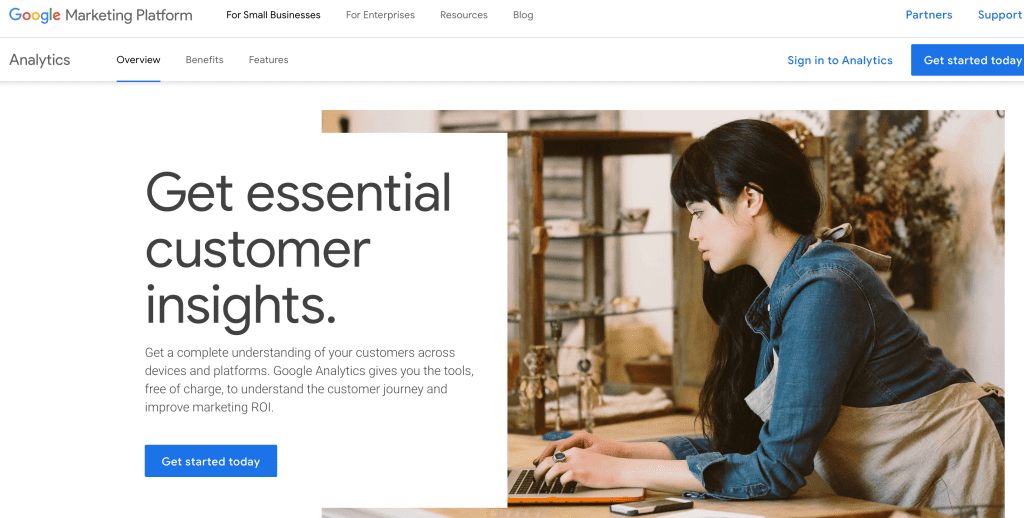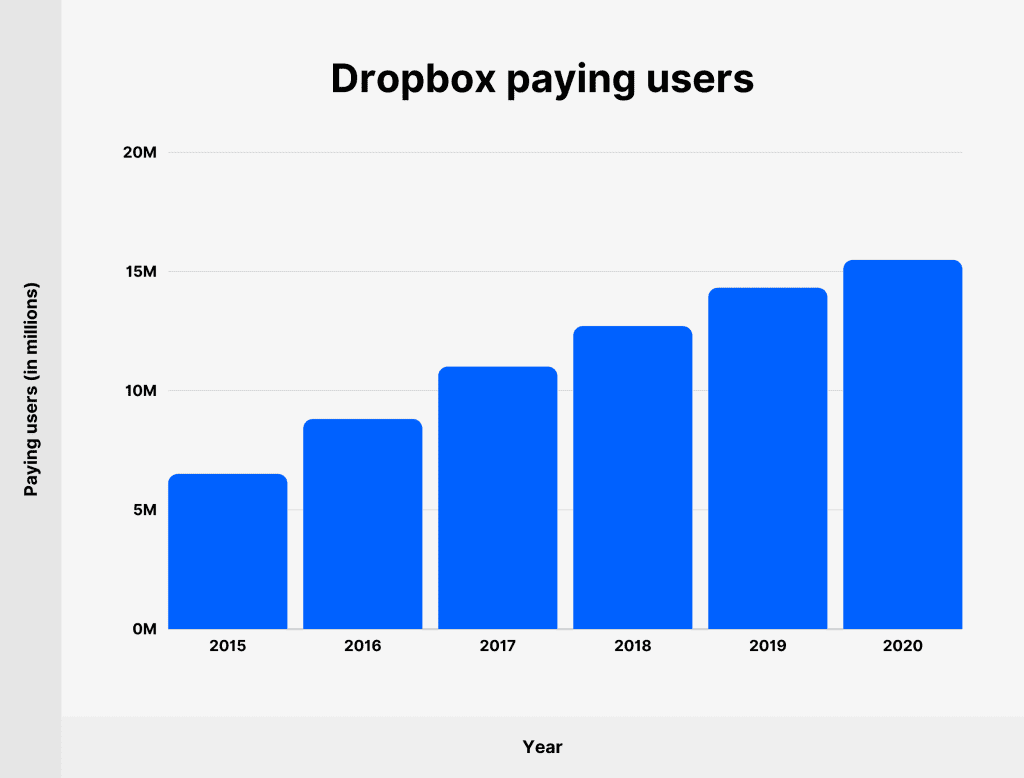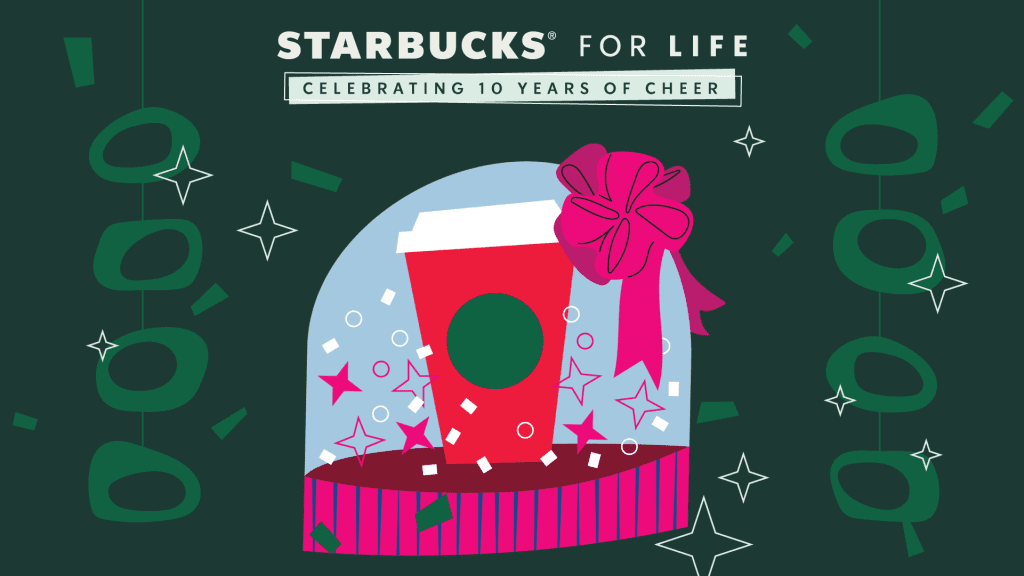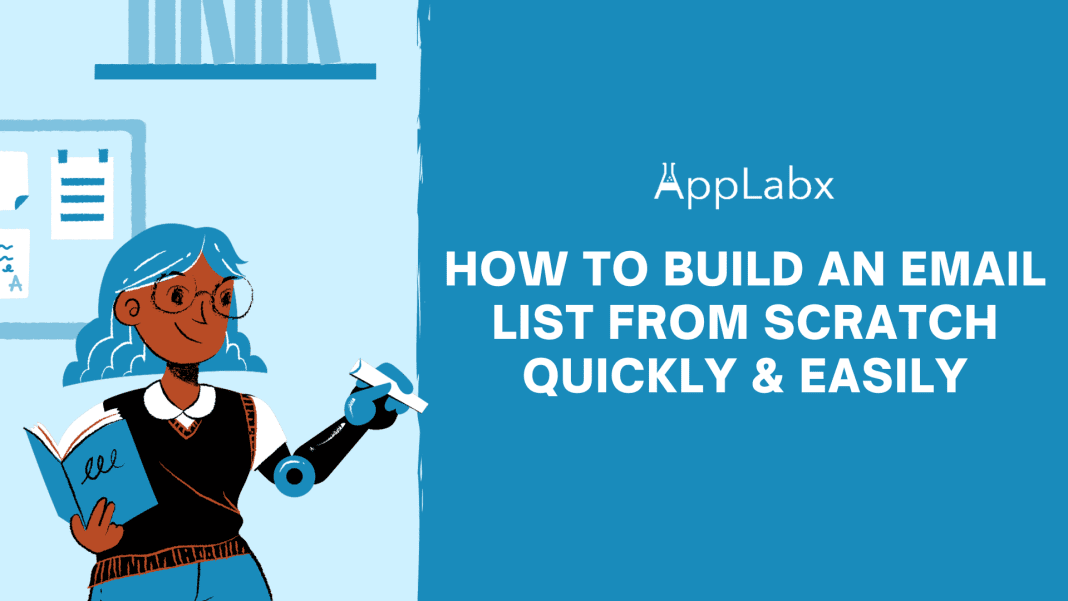Key Takeaways
- Strategic Foundation for Growth: Lay the groundwork with a clear understanding of your audience and compelling brand presence to initiate successful email list-building.
- Compelling Lead Magnets: Craft irresistible incentives tailored to your audience’s needs, making subscriptions enticing and ensuring rapid growth.
- Dynamic Strategies for Engagement: Utilize content marketing, social media, contests, and referral programs strategically to foster excitement and amplify your email list quickly and easily.
In the ever-evolving digital realm, where attention spans wane and online interactions are increasingly fleeting, establishing and maintaining a direct line of communication with your audience stands paramount.
The email list emerges as a potent asset, not only enduring the test of time but serving as a direct conduit to engage, nurture, and convert potential leads into devoted customers.
This comprehensive guide plunges into the intricacies of “How to Build an Email List from Scratch Quickly & Easily.”

Unlocking the Power of Email Lists
Why is building an email list a game-changer for businesses and individuals alike?
Envisage has a dedicated group of subscribers eagerly awaiting your updates, promotions, and valuable content.
Email lists transcend mere numbers; they embody a community keenly interested in what you offer.
Whether you’re an aspiring blogger, an e-commerce entrepreneur, or a seasoned marketer, the advantages of a well-nurtured email list extend beyond conventional marketing channels.
The Urgency of Starting from Scratch
But why “from scratch”?
The digital landscape is dynamic, and strategies that worked yesterday may not be as effective tomorrow. Initiating from scratch ensures adaptation to the latest trends and tailoring approaches to the unique needs of your audience.
This guide leads you through foundational steps, helping you understand your target audience, set realistic goals, and organically build a robust email list.
The Blueprint for Rapid Growth
Is it possible to build an email list quickly and easily?
Absolutely.
This guide provides a blueprint for accelerated growth without compromising the integrity of your list.
From creating irresistible lead magnets to optimizing opt-in forms and leveraging content marketing and social media, each step is meticulously designed to expedite your journey without sacrificing subscriber quality.
A Symphony of Strategies
Imagine orchestrating a symphony of strategies to captivate your audience.
This guide isn’t a one-size-fits-all solution but a collection of harmonious techniques.
We explore the significance of compelling lead magnets, the art of crafting conversion-optimized opt-in forms, and the role of content marketing and social media in amplifying your reach.
Whether you’re a seasoned marketer or a novice in the digital realm, there’s something here for everyone.
Embarking on a Journey of Growth
Building an email list is not just a task; it’s a journey.
Along the way, we uncover the potency of running contests, implementing referral programs, and analyzing key metrics to fine-tune your approach continually.
This isn’t a static roadmap but a dynamic expedition, adapting to the evolving digital landscape while ensuring your email list becomes an enduring asset for your endeavours.
So, buckle up as we embark on a journey to demystify the process of building an email list from scratch – quickly, easily, and with a strategic finesse that ensures not just growth in numbers but genuine engagement and lasting connections with your audience.
Get ready to transform your digital presence and open the gateway to a thriving community of subscribers eager to be a part of your narrative.
But, before we venture further, we like to share who we are and what we do.
About AppLabx
From developing a solid marketing plan to creating compelling content, optimizing for search engines, leveraging social media, and utilizing paid advertising, AppLabx offers a comprehensive suite of digital marketing services designed to drive growth and profitability for your business.
AppLabx is well known for helping companies and startups use email marketing to drive web traffic to their websites and web apps.
At AppLabx, we understand that no two businesses are alike. That’s why we take a personalized approach to every project, working closely with our clients to understand their unique needs and goals, and developing customized strategies to help them achieve success.
If you need a digital consultation, then send in an inquiry here.
How to Build an Email List from Scratch Quickly & Easily
- Setting the Foundation
- Creating an Irresistible Lead Magnet
- Setting Up an Opt-in Form
- Leveraging Content Marketing
- Utilizing Social Media
- Running Contests and Giveaways
- Implementing Referral Programs
- Analyzing and Optimizing
1. Setting the Foundation
Setting the Foundation for Email List-Building: Understanding Your Target Audience
Building a successful email list begins with a solid foundation, and this involves a deep understanding of your target audience.
Your audience is not just a group of faceless individuals; they are the heartbeat of your email marketing strategy. Let’s delve into the essential steps to lay this foundation effectively.

Define Your Ideal Subscribers
Identifying and defining your ideal subscribers is the first crucial step. Who are they? What are their preferences, challenges, and interests? Conduct thorough market research to create buyer personas that represent your target audience.
For instance, if you’re in the fitness industry, personas may include “Fitness Enthusiasts,” “Weight Loss Seekers,” or “Gym Newbies.”

Identify Your Niche
Understanding your niche is equally pivotal. Consider the specific area within your industry that sets you apart.
For instance, if you’re in the tech sector, your niche might be “Blockchain for Sustainable Development” or “AI-driven Healthcare Solutions.”
This specificity helps tailor your content and lead magnets to attract a more engaged audience.
Establishing Goals for Effective List-Building
With a clear picture of your audience, the next step is to establish realistic and measurable goals for your email list-building endeavours.
Short-term Objectives
Set short-term goals to gauge your progress.
These might include reaching a specific number of subscribers within the first month, achieving a target open rate, or increasing click-through rates on your initial email campaigns.
Long-term Goals
Simultaneously, plan for the long term.
Consider your annual growth targets, overall engagement metrics, and conversion rates. Long-term goals give your strategy direction and purpose, aligning your efforts with a broader vision.
Data-Driven Decision Making
To enhance the foundation further, leverage data to inform your decisions.
Utilize Analytics Tools
Tap into analytics tools like Google Analytics or social media insights to gather data on user behavior, website visits, and content engagement. This data will guide your content creation and help you understand where your audience is most active.

Customer Feedback and Surveys
Direct feedback from your audience is invaluable.
Conduct surveys or encourage feedback through various channels to gain insights into their preferences.
For example, Dropbox achieved massive user growth by implementing user feedback, which led to product improvements and increased customer satisfaction.

2. Creating an Irresistible Lead Magnet
A cornerstone of successful email list-building is the creation of an irresistible lead magnet.
This critical element serves as the catalyst for converting casual website visitors into valuable subscribers who are genuinely interested in what you have to offer.
In this section, we’ll explore the strategies and examples that make lead magnets not just appealing but downright irresistible.

Importance of Lead Magnets
Understanding why lead magnets are pivotal sets the stage for crafting compelling offers that your audience simply can’t resist.
According to a study, 47% of buyers viewed three to five pieces of content before engaging with a sales rep.
A well-crafted lead magnet becomes the entry point for this content consumption journey.
Types of Lead Magnets
Diversifying your lead magnets is crucial.
Different audience segments respond to various formats, so offering a range ensures broader appeal.
Ebooks and Guides
Example: Neil Patel’s “The Advanced Guide to SEO” is a comprehensive resource that caters to digital marketers and entrepreneurs seeking in-depth knowledge. It showcases Neil Patel’s expertise while providing immense value to the audience.

Checklists and Templates
Example: “The Ultimate Social Media Posting Checklist” is a concise and actionable lead magnet that aids social media managers in streamlining their posting process.
Webinars and Courses
Example: HubSpot’s free marketing courses cover a range of topics, attracting professionals looking to enhance their skills. These courses serve as both a lead magnet and a nurturing tool.
Crafting an Effective Lead Magnet
The success of a lead magnet lies in its ability to solve a specific problem, address a pain point, or provide valuable insights. Here’s how to craft one effectively:
Identify Pain Points
Conduct surveys or analyze customer support queries to identify common pain points within your audience.
Addressing these pain points increases the perceived value of your lead magnet.
Provide Actionable Solutions
Ensure your lead magnet offers actionable solutions.
Whether it’s a guide, checklist, or webinar, users should be able to implement the insights immediately.
Design Engaging Visuals
Visual appeal matters.
Invest in professional design to enhance the perceived value of your lead magnet. Tools like Canva can help even those without design expertise.
3. Setting Up an Opt-in Form
Once you’ve crafted an irresistible lead magnet, the next critical step in your email list-building journey is setting up an opt-in form.
This gateway serves as the entry point for potential subscribers, and its design and functionality can significantly impact conversion rates. Let’s explore the intricacies of creating an effective opt-in form.

Choosing the Right Email Marketing Platform
Selecting the right email marketing platform is foundational to setting up an efficient opt-in form.
Different platforms offer varying features and integrations, so choose one that aligns with your goals and budget.
Comparison of Popular Platforms
- Mailchimp: Known for its user-friendly interface and robust features, Mailchimp is suitable for beginners and small to medium-sized businesses.

- ConvertKit: Geared toward content creators and bloggers, ConvertKit offers advanced automation features and segmentation capabilities.
- Constant Contact: Ideal for small businesses, Constant Contact provides a range of templates and marketing tools, making it easy to set up opt-in forms.
Designing a Conversion-Optimized Opt-in Form
The design of your opt-in form plays a pivotal role in enticing visitors to subscribe.
Here’s how to ensure it’s conversion-optimized.
Effective Copywriting
- Craft compelling and clear copy that conveys the value of subscribing. Use action-oriented language, highlighting the benefits users will gain.
- Example: “Join our exclusive community for weekly tips and insider insights to supercharge your business growth.”
Eye-catching Design Elements
- Incorporate visually appealing elements that draw attention to your opt-in form. Use contrasting colours, high-quality images, and clean layouts.
- Example: Airbnb’s newsletter sign-up form uses vibrant colours, a simple layout, and a concise value proposition to encourage sign-ups.
- Utilize a mobile-responsive design to ensure a seamless experience for users accessing your site on various devices. According to Statista, in the first quarter of 2023, mobile devices (excluding tablets) generated 58.33 per cent of global website traffic.
Implementing Smart Form Placement
Strategic placement of your opt-in form can make the difference between a visitor scrolling past and becoming a subscriber.
Above the Fold vs. Exit-Intent Popups
- Placing your opt-in form above the fold ensures it’s visible without scrolling, capturing immediate attention.
- Exit-intent popups, triggered when a user is about to leave the site, can be effective in re-engaging visitors. Exit popups typically convert an additional 2 to 4% of your website visitors.
- Example: Neil Patel strategically uses exit-intent popups on his blog, offering a free SEO analysis to visitors before they leave.
Integration with Content
- Embed opt-in forms within your content, strategically placed where they naturally fit. This ensures they are seen by engaged readers.
- Example: Content marketing guru, Brian Dean, seamlessly integrates opt-in forms within his blog content, offering bonus resources related to the topic at hand.
Leveraging Advanced Features for Personalization
Take advantage of advanced features offered by your chosen email marketing platform to personalize opt-in forms based on user behaviour and preferences.
Behavior-Based Triggers
Set up triggers based on user behaviour, such as time spent on the site or specific pages visited. Tailor opt-in forms to address the user’s interests.
Segmentation for Targeted Opt-ins
- Utilize segmentation to categorize subscribers based on their preferences. Design opt-in forms that cater to specific segments, increasing relevance.
- According to a study by Mailchimp, segmented email campaigns result in 14.31% higher than non-segmented campaigns.
4. Leveraging Content Marketing
Content marketing and email list-building go hand in hand, creating a symbiotic relationship where compelling content attracts engaged audiences, and an email list serves as a direct channel to nurture and convert them.
In this section, we’ll explore the strategies, examples, and statistics that highlight the synergy between content marketing and growing your email list.

Creating High-Quality Blog Posts
SEO Best Practices
- Keyword Research: Begin by conducting thorough keyword research to identify topics and phrases relevant to your audience. Tools like Semrush and Ahrefs can aid in uncovering valuable keywords with high search volume.

- Example: Backlinko’s blog consistently ranks high for competitive SEO-related keywords, driving organic traffic and potential subscribers.
- Companies who blog receive 97% more links to their website.
Compelling Headlines
- Craft attention-grabbing headlines that spark curiosity and resonate with your audience. Use powerful words and emotional triggers to make your headlines irresistible.
- Example: BuzzFeed’s use of intriguing headlines like “17 Facts That Will Make You Proud to Be a Woman” leverages curiosity to encourage clicks and engagement.
- Research shows that headlines with emotional trigger words had a 73% higher click-through rate than those without them.
Guest Posting and Collaboration
Identifying Opportunities
- Seek guest posting opportunities on reputable websites within your niche. This not only expands your reach but also positions you as an authority in your field.
- Example: Digital marketing expert, Rand Fishkin, often contributes insightful articles to major publications, broadening his influence and attracting a wider audience.
Building Relationships with Influencers
- Collaborate with influencers by co-creating content or having them as guest contributors. Their existing audience can be a goldmine for new subscribers.
- Example: Tim Ferriss, known for his podcast and bestselling books, frequently features influencers on his platforms, leveraging their audience for mutual growth.
5. Utilizing Social Media
In the digital age, social media serves as a dynamic platform for connecting with audiences and driving engagement.
When strategically utilized, social channels become powerful tools for growing your email list.
In this section, we’ll delve into proven strategies, provide real-world examples, and present data-backed insights to guide you in leveraging social media for exponential email list growth.

Promoting Lead Magnets on Social Platforms
Crafting Engaging Social Media Posts
- Develop visually appealing and compelling social media posts that showcase your lead magnets. Use attention-grabbing visuals, concise copy, and clear calls to action.
- Example: Entrepreneur and author Marie Forleo effectively promotes her lead magnet, the “Business Building Resource Library,” through engaging Instagram posts that highlight the value subscribers will receive.
- According to a study, posts with images receive 2.3 times more engagement than those without.
Leveraging Paid Advertising
- Invest in targeted paid advertising on platforms like Facebook, Instagram, and LinkedIn. Create ads specifically designed to capture leads, directing users to dedicated landing pages.
- Example: HubSpot uses Facebook ads to promote their free marketing courses, targeting users interested in enhancing their marketing skills.
Choosing the Right Social Media Platforms
Understanding Platform Demographics
- Tailor your approach based on the demographics of each social media platform. For instance, Instagram is popular among younger audiences, while LinkedIn caters to professionals.
- Example: Fashion brands often thrive on Instagram, leveraging its visual nature to showcase products, whereas B2B companies may find success on LinkedIn, connecting with industry professionals.

- Around three-quarters of U.S. adults (73%) say they use YouTube, making it a diverse platform for reaching various audience segments.
Consistent Branding Across Platforms
- Maintain consistent branding across all social media platforms. Ensure your profile images, bios, and cover photos align with your brand identity to build recognition.
- Example: Coca-Cola seamlessly maintains a consistent brand image across platforms, using the same logo and visual elements on Facebook, X (formerly Twitter), and Instagram.
- A study found that consistent brand presentation across all platforms can increase revenue by up to 23%.
Engagement Strategies for Increased Visibility
Regularly Interacting with Followers
- Foster engagement by responding to comments, asking questions, and actively participating in discussions. This not only builds a community but also boosts the visibility of your content.
- Example: Gary Vaynerchuk, a serial entrepreneur, engages with his audience across various social platforms, fostering a sense of community and loyalty.
Utilizing Hashtags Strategically
- Incorporate relevant hashtags to increase the discoverability of your content. Research and use popular and niche-specific hashtags to expand your reach.
- Example: The #ThrowbackThursday hashtag on Instagram is widely used by brands and individuals to share nostalgic content, increasing visibility and engagement.
- Posts with at least one hashtag average 12.6% more engagement than those without.
6. Running Contests and Giveaways
Contests and giveaways stand as powerful instruments in the marketer’s toolbox, offering a dynamic way to captivate audiences, foster excitement, and fuel email list growth.
In this extensive guide, we’ll unravel the intricacies of running contests and giveaways, delving into strategies, providing real-world examples, and presenting data-driven insights to help you maximize the impact of these campaigns on your email list.

The Strategic Value of Contests for Email List Growth
Engagement Magnetism
- Contests inherently spark excitement and engagement, driving participants to actively interact with your brand. The gamified nature of contests creates a sense of urgency and fosters a community spirit.
- Example: Starbucks, with its annual “Starbucks for Life” contest, strategically engages customers by encouraging them to participate in daily challenges to earn entries.
The grand prize of free Starbucks beverages for life creates a buzz and sustains excitement throughout the campaign. - Nearly 65% of survey respondents consider social media giveaways and contests to be effective for increasing followers, and approximately 34% of new customers are acquired through contests.

Targeted Audience Acquisition
- Contests provide an opportunity to attract participants genuinely interested in your products or services. By aligning the prize with your brand and industry, you ensure a more targeted and valuable email list.
- Example: A fitness brand hosting a contest for high-quality gym equipment not only attracts participants interested in fitness but also ensures a more relevant audience for future marketing efforts.
Planning and Executing a Contest with Precision
Prize Selection Strategies
- Choose prizes that resonate with your target audience and align with your brand. The perceived value of the prize significantly influences participation and the overall success of the campaign.
- Example: GoPro’s “Million Dollar Challenge” encourages users to submit their footage for a chance to be featured in a GoPro video and win a share of the prize pool. The allure of being part of a high-profile production serves as a powerful motivator.

Multi-Channel Promotion
- Develop a comprehensive promotion strategy that spans multiple channels, including email marketing, social media, and website banners. Increased visibility across platforms enhances the reach of your contest.
- Example: Amazon’s promotion of Prime Day contests is a well-orchestrated effort that includes emails to Prime members, social media announcements, and website banners. This multi-channel approach creates anticipation and encourages participation.

Implementing Referral Programs for Viral Growth
Turning Subscribers into Advocates
- Integrate referral programs seamlessly into your contests, encouraging participants to refer friends for additional entries. This not only expands your reach but turns existing subscribers into advocates for your brand.
- Example: Dropbox achieved significant user growth by offering extra storage space for users who referred friends to join the platform. This viral loop created a mutually beneficial system.

Designing an Effective Referral Program
- Clearly communicate the benefits of the referral program, making it easy for participants to share the contest with their networks. The simplicity and attractiveness of the referral process are key to its success.
- Example: Airbnb’s referral program not only rewards the referrer but also provides an incentive for the new user. This two-way reward system encourages sharing and amplifies the contest’s reach. Do note as of the time of writing this article, Airbnb’s referral program has ended.
- A study found that 92% of consumers trust referrals from people they know.
Analyzing and Optimizing Contest Performance
Key Metrics Monitoring
- Use social media analytics tools and contest-specific platforms to monitor key metrics such as the number of entries, shares, and new subscribers acquired. These insights are crucial for understanding participant behaviour.
- Example: Rafflecopter provides detailed analytics for contests, offering brands valuable data on participant demographics and engagement patterns.
A/B Testing for Continuous Improvement
- Implement A/B testing to refine different elements of your contest, including entry methods, prize structures, and promotion strategies. This iterative approach allows for continuous improvement.
- Example: Coca-Cola might conduct A/B tests on various contest mechanics to understand what resonates best with their audience, refining their strategy for future campaigns.
- 72% of marketers found A/B testing to be a highly valuable method for improving conversion rates.
7. Implementing Referral Programs
Referral programs stand as potent engines of growth, leveraging the power of satisfied customers to expand your customer base and enhance brand loyalty.
In this comprehensive guide, we’ll explore the strategic intricacies of implementing referral programs.

The Strategic Value of Referral Programs
Leveraging Customer Advocacy
- Referral programs tap into the trust and enthusiasm of existing customers, turning them into advocates who actively promote your brand. Satisfied customers are often the most effective marketing channels.
- Example: Dropbox’s referral program was a game-changer. Users were incentivized with additional storage space for every friend they referred, transforming satisfied customers into brand evangelists.
- According to a study, 92 percent of people trusted recommendations from friends and family above all other forms of advertising when making a purchasing decision.
Cost-Effective Customer Acquisition
- Referral programs offer a cost-effective way to acquire new customers. By relying on existing customers to bring in new business, you reduce the need for extensive marketing efforts.
- Example: Tesla’s referral program, offering incentives like free Supercharging miles, not only rewards existing customers but also attracts new ones without significant advertising expenses.
- Referred customers have a 16% higher lifetime value than non-referred customers.
Designing an Effective Referral Program
Clear and Attractive Incentives
- Clearly communicate the incentives for both the referrer and the new customer. The rewards should be attractive enough to motivate participation and create a win-win scenario.
- Example: Airbnb’s referral program provides benefits for both the referrer and the new user. This balanced approach ensures mutual benefits and encourages sharing.
- A study found that referred customers are 4X more likely to refer more customers to your brand.
Simplified Referral Process
- Ensure that the referral process is straightforward and user-friendly. Complicated processes may deter participation. Integrating the referral mechanism seamlessly into the user journey is crucial.
- Example: Uber’s referral program is seamlessly integrated into its app, allowing users to refer friends with just a few taps. The simplicity encourages more users to participate.
Promoting Referral Programs Effectively
Multi-Channel Promotion
- Promote your referral program across various channels, including email, social media, and your website. Increased visibility ensures that more customers are aware of the opportunity.
- Example: PayPal’s referral program gained traction through widespread promotion, reaching users through email campaigns, social media announcements, and website banners.
Utilizing Email Marketing
- Leverage email marketing to communicate the benefits of your referral program directly to your existing customer base. Personalized and targeted emails can effectively drive participation.
- Example: Evernote uses email marketing to notify its users about its referral program, offering premium features as a reward for successful referrals.

Monitoring and Optimizing Referral Program Performance
Detailed Analytics and Tracking
- Implement robust analytics tools to monitor the performance of your referral program. Track key metrics such as referral conversion rates, participant demographics, and the overall impact on customer acquisition.
- Example: ReferralCandy provides comprehensive analytics, allowing businesses to track the performance of their referral programs and gain insights into customer behavior.
A/B Testing for Refinement
- Conduct A/B testing to refine different elements of your referral program. Experiment with incentives, messaging, and the referral process to identify the most effective strategies.
- Example: Dropbox experimented with various referral incentives, testing different combinations of free storage space for both the referrer and the new user to optimize their program.
8. Analyzing and Optimizing
Analyzing and optimizing your email marketing efforts is a crucial aspect of ensuring sustained growth and engagement.
In this comprehensive guide, we’ll explore the strategic intricacies of analyzing data and optimizing your email campaigns.

Key Metrics Monitoring for Email Campaigns
Open Rates and Click-Through Rates (CTR)
- Regularly monitor open rates and CTR to gauge the effectiveness of your email campaigns. Understanding how many recipients open your emails and click on the content provides valuable insights into audience engagement.
- Example: Mailchimp’s analytics dashboard provides a detailed breakdown of open rates and CTR, allowing users to assess the performance of individual campaigns.
- The average open rate for emails across industries is 17.92%, and the click-through rate is 2.69%.
Conversion Rates
- Track conversion rates to measure how effectively your email campaigns are converting leads into customers. This metric directly ties to the success of your overall marketing goals.
- Example: Shopify’s analytics tools enable businesses to track conversion rates from email marketing campaigns, providing insights into the impact on sales.
- The average overall email open rate as of early 2022 was 16.97%.
A/B Testing for Email Campaign Refinement
Subject Lines and Email Copy
- Conduct A/B testing on various elements such as subject lines and email copy to understand what resonates best with your audience. Experiment with different tones, lengths, and styles.
- Example: HubSpot regularly conducts A/B tests on subject lines, analyzing which ones lead to higher open rates. This iterative approach helps refine their email strategy.
Call-to-Action (CTA) Buttons and Placement
Test different CTA buttons and their placements within your emails. The colour, wording, and position of your CTA can significantly impact conversion rates.
Personalization and Segmentation Strategies
Personalized Content
- Leverage personalization to tailor your content to individual recipients. Analyze the performance of personalized elements, such as dynamic content and personalized greetings.
- Example: Amazon’s personalized product recommendations in email campaigns are based on user behaviour, resulting in higher engagement and conversion rates.
- A report found that segmented and personalized emails help generate 58% of revenue.
Segmentation Effectiveness
- Assess the impact of segmentation on your email campaigns. Analyzing how different segments respond to specific content allows for more targeted and effective communication.
- Example: Spotify might analyze the engagement of different user segments to tailor email content, promoting genres or artists based on individual preferences.
- Segmented email campaigns have a 14.31% higher open rate and a 100.95% higher click-through rate compared to non-segmented campaigns.
Responsive Design and Mobile Optimization
Email Responsiveness Across Devices
- Ensure your emails are optimized for various devices, with a focus on mobile responsiveness. Analyze how well your emails perform on different platforms and make necessary adjustments.
- Example: Gmail’s analytics provide insights into the devices used to open emails, helping marketers understand the importance of mobile optimization.
- 43% of email opens occur on mobile devices.
Load Time and User Experience
- Monitor email load times and assess user experience. Emails that load quickly and provide a seamless experience contribute to higher engagement rates.
- Example: Google Analytics can be used to analyze email load times, with Gmail aiming for fast-loading promotional emails to enhance user experience.

- According to a study, 53% of visits are abandoned if a mobile site takes longer than 3 seconds to load.
Email List Health and Engagement Metrics
Subscriber Growth and Attrition Rates
- Evaluate the growth and attrition rates of your email subscriber list. Understanding the factors influencing these rates allows for proactive measures to maintain a healthy email list.
- Example: Constant Contact’s reporting tools provide insights into subscriber growth and attrition, empowering businesses to make data-driven decisions.
- Part of maintaining a healthy mailing list involves regularly removing subscribers who have stopped opening your emails.
Engagement Over Time
- Analyze how engagement evolves over time, considering factors such as seasonality, product launches, or promotional campaigns. This analysis aids in optimizing the timing and frequency of your email campaigns.
- Example: An e-commerce brand might analyze engagement patterns to determine the most effective times to launch product-focused email campaigns.
- Thursdays have the highest open rate, followed by Tuesdays as the second-best day.
Conclusion
In the vast landscape of digital marketing, building and nurturing an email list remains a cornerstone for cultivating lasting connections with your audience.
Throughout this comprehensive guide on “How to Build an Email List from Scratch Quickly & Easily,” we’ve traversed the essential strategies, from laying a robust foundation to implementing dynamic tactics that propel rapid growth.
As we conclude this journey, let’s encapsulate the key takeaways and empower you to embark on a successful email list-building expedition.
Setting the Foundation for Success
Building an email list starts with a solid foundation.
Understand your audience, define your goals, and invest time in crafting a compelling brand presence.
The amalgamation of a clear value proposition, captivating branding, and an understanding of your target audience lays the groundwork for a thriving email list.
Creating an Irresistible Lead Magnet
Enticing your audience to join your email list necessitates a valuable incentive. Craft an irresistible lead magnet tailored to address your audience’s pain points or fulfil their needs.
Be it exclusive content, guides, or discounts—your lead magnet serves as the gateway to initiating meaningful connections.
Setting Up an Opt-in Form with Finesse
Opt-in forms act as the gateway between your audience’s interest and subscription. Optimize their design, placement, and messaging to maximize conversion rates.
Leverage the power of simplicity, clarity, and strategic positioning to encourage visitors to take the crucial step of subscribing to your email list.
Leveraging Content Marketing for Impact
Content marketing stands as a dynamic force in email list growth. Consistently deliver high-quality, relevant content to your audience through various channels.
Blog posts, infographics, and videos not only showcase your expertise but also entice visitors to become subscribers, craving more of the valuable insights you offer.
Utilizing Social Media for Explosive Reach
Harness the immense power of social media platforms to amplify your email list growth. Craft engaging posts, leverage paid advertising, and build a consistent brand presence across platforms.
Social media not only directs traffic to your opt-in forms but also serves as a fertile ground for cultivating a community around your brand.
Running Contests and Giveaways for Excitement
Inject excitement into your email list-building strategy with contests and giveaways. Gamify the experience, offer enticing prizes, and encourage participants to share your brand within their networks.
Implementing Referral Programs for Viral Expansion
Turn subscribers into advocates by implementing referral programs. Incentivize your audience to refer friends, expanding your reach organically.
Dropbox’s success in achieving substantial user growth through its referral program showcases the potential of transforming satisfied customers into brand evangelists.
Analyzing and Optimizing for Continuous Improvement
Data is your compass in the ever-evolving landscape of email marketing. Regularly analyze key metrics, conduct A/B testing, and refine your strategies.
Whether it’s optimizing subject lines, personalizing content, or ensuring mobile responsiveness, continuous improvement is the linchpin of sustained success.
If you are looking for a top-class digital marketer, then book a free consultation slot here.
If you find this article useful, why not share it with your friends and business partners, and also leave a nice comment below?
We, at the AppLabx Research Team, strive to bring the latest and most meaningful data, guides, and statistics to your doorstep.
To get access to top-quality guides, click over to the AppLabx Blog.
People also ask
How do I create an email list from scratch?
To create an email list from scratch, start by defining your target audience. Craft an enticing lead magnet, set up user-friendly opt-in forms on your website, and leverage content marketing. Utilize social media, run contests, and implement referral programs to rapidly grow and engage your audience.
How can I make my email list faster?
Accelerate email list growth by optimizing opt-in forms for simplicity, leveraging irresistible lead magnets, and promoting across social media. Run targeted contests, implement referral programs, and consistently deliver valuable content to rapidly build and engage your audience.
How long does it take to create an email list?
The time to create an email list varies. You can start seeing results in weeks with effective strategies like compelling lead magnets and targeted promotions. Consistent efforts and engagement tactics ensure a steady and growing email list.




































